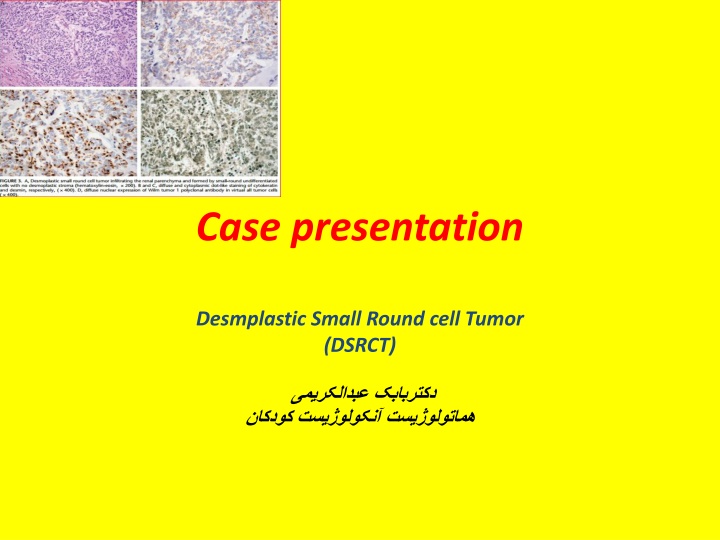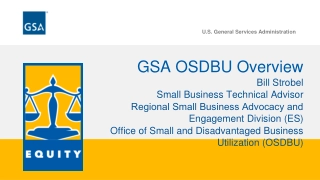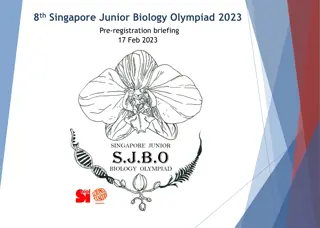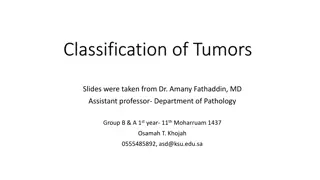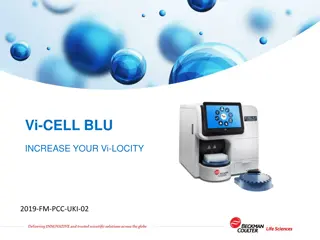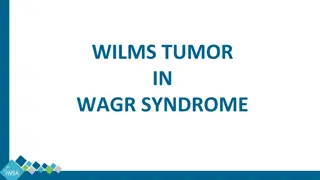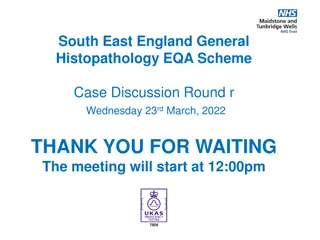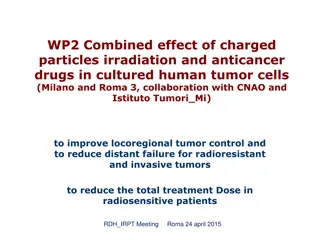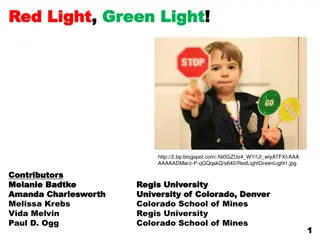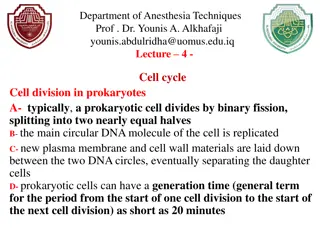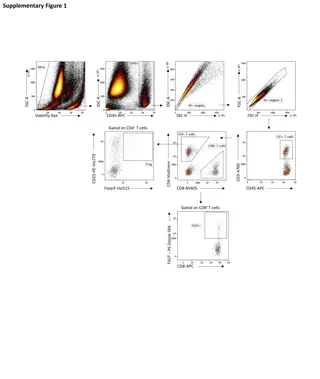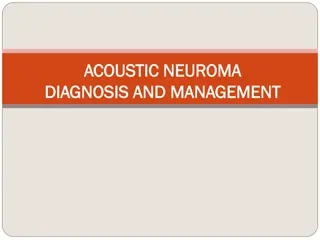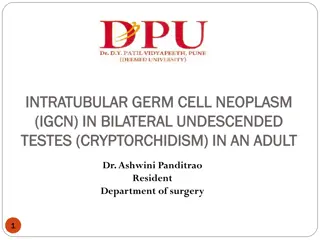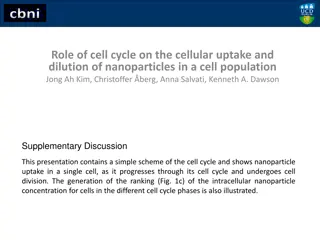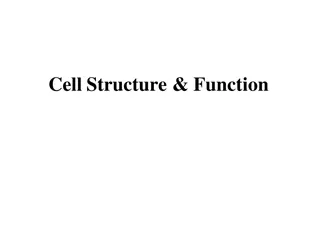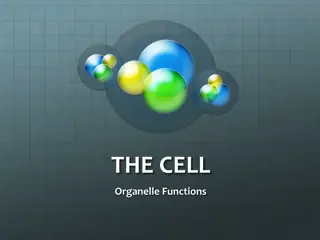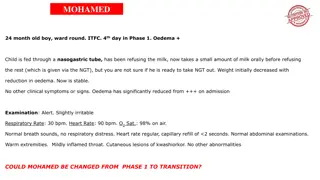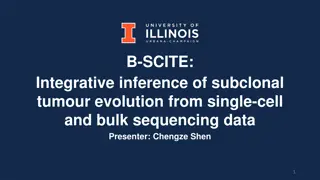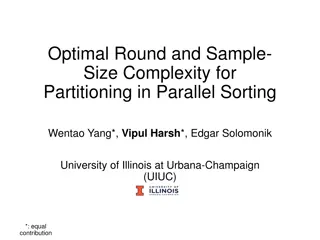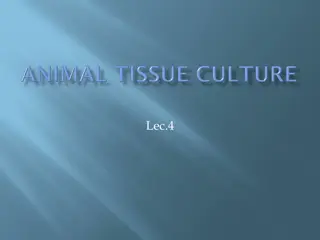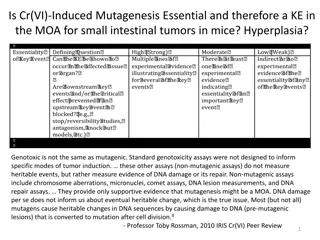Desmoplastic Small Round Cell Tumor (DSRCT) in a 5-Year-Old Boy: Case Presentation and Treatment Protocol
A 5-year-old boy presented with subacute abdominal pain revealing a desmoplastic small round cell tumor (DSRCT) in his retroperitoneum. The case details the pathology, chemotherapy treatment, relapse, and subsequent developments, including the rare occurrence of DSRCT originating in the kidney. The journey involves diagnostic challenges, treatment protocols, and clinical outcomes. Images and scans provide visual aids for understanding the progression of the disease in this unique pediatric case.
Download Presentation

Please find below an Image/Link to download the presentation.
The content on the website is provided AS IS for your information and personal use only. It may not be sold, licensed, or shared on other websites without obtaining consent from the author.If you encounter any issues during the download, it is possible that the publisher has removed the file from their server.
You are allowed to download the files provided on this website for personal or commercial use, subject to the condition that they are used lawfully. All files are the property of their respective owners.
The content on the website is provided AS IS for your information and personal use only. It may not be sold, licensed, or shared on other websites without obtaining consent from the author.
E N D
Presentation Transcript
Case presentation Desmplastic Small Round cell Tumor (DSRCT)
Case presentation: A 5 y old boy with subacute intermitent abdominal pain. abdominopelvic US: retroperitoneal tumor since 3 years ago.(retroperitoneal mass) First Pathology:{desmoplastic} small round cell tumor chemtherapy courses:12-13 IHC:?
22/12/96 retroperitoneal mass DDX: 1.neurogenic tumors 2.retroperitoneal sarcoma
26/12/94 8 biopsy samples: around ureter pelvic mass
Treatment Protocol Only chemotherapy with: VCR+DOX+CPM+VP16 during 23 Admitions(chemo+FNP)
Bilateral BMA/B Durning chemotherapyin Tehran - was not involved in Lorestan
CT scan 96/6/15 :
Pathology after relapse
DSRT primary of the kidney was first described by Su et al in 2004, and since then only a total of 8 cases have been reported in literature. Herein, we report the ninth case of DSRCT arising in the kidney of a child mimicking both clinically and pathologically Wilm tumor (nephroblastoma) including review of the literature.
WT & DSRCT diffrentiation BY molecular biology: DSRCT: EWSR1-WT1 rearrangement (+) WT1 mutation carboxy-terminus (+) WT: WT1 mutation amino-terminus (+) WT1 carboxy-terminus(+) EWSR1- WT1 fusion prot due to t(11; 22) is characteristic of DSRCT
: Rare-highly aggressive mesenchymal Age ranges : 6 to 49 years, M/F: 4 : 1 tumor typically involves : abdominalcavity(multiple peritoneal implantation)+ diaphragm 2 common sites for metastatic disease beyond the peritoneum: lung-liver staging :PET-CT: may be a helpful adjunct to evaluate distant metastasis
Immunohistochemistry: Epithelial membrane antigen (EMA)(+), desmin (DES)(+), neuron specific enolase (NSE)(+), synaptophysin[weakly positive (+/-)], calretinin (+/-), cytokeratin (CK)(-), chromogranin-A(-) CD 99(-).
Several transcriptional targets of the EWSR1-WT1 chimera have been identified such as (for immunotherapy) Platelet Derived Growth Factor A (PDGF-A), IL2 receptor , Myeloid Leukemia Factor-1 (MLF1) Insulin-like Growth Factor 1 receptor (IGF1-1)
Radiation Therapy: whole-abdomen radiotherapy at a dose of 30Gy, +/-focal boost, was initially utilized after debulking surgery. Memorial Sloan Kettering center: IMRT+ debulking surgery IMRT+ debulking surger+ HIPEC sub-optimal disease-free survival of <1 year
AHSCT Thiotepa (900 mg/m2) plus carboplatin (1500 mg/m2) with stem cell rescue
Our actual treatment strategy: 1. Neoadj chemotherapy(ICE-5/ 3 courses)/ Secondlook surgery(?) 3.chemotherapy(TMZ+Irinot+VCR+Avastin-5/(2 courses) Secondlook surgery(?) 4.ICE-5/cis or ICE-3 ( 3 course)(Titration therapy) RT PET-CT/MRI AHSCT
